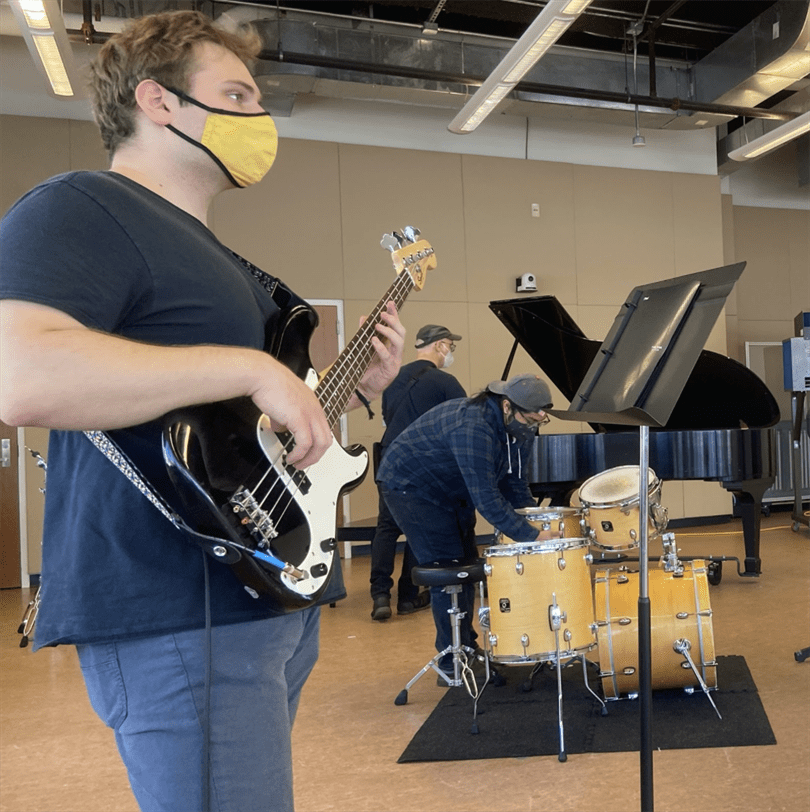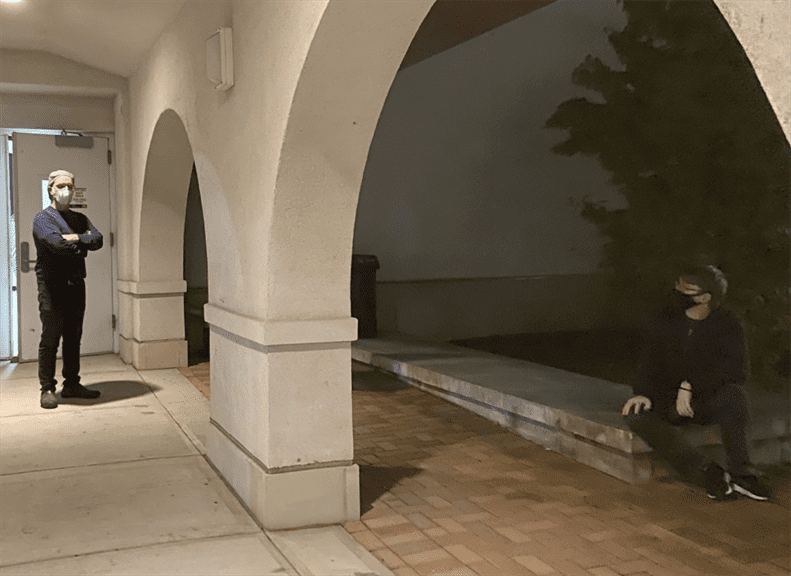As the global coronavirus (COVID-19) pandemic continues to affect communities across the world, universities are having to reinvent the common ways of teaching that institutes are formerly used to. For students in the arts, particularly the performing arts, socialization and close contact is typically required in their studies.
With no sign of the pandemic subsiding, the professors and students at Montclair State University’s John J. Cali School of Music are working together to find ways to create music while being socially distanced.
Oscar Perez, the jazz studies coordinator, discussed the early stages of the pandemic for jazz students.
“In March, when we basically had to shut down everything, it was kind of like the first foray into what would end up being the modality that we’re teaching now,” Perez said. “That is basically when everything moved to online.”
According to Perez, when Montclair State decided that all academic courses were going to be held virtually, the music department was quick to ensure that all professors had the resources they needed to successfully run their courses remotely.
“A lot of it was basically going in and running a triage unit, where I was like, ‘OK, what do you need’ and ‘how can you do your class,’” Perez said.
Once faculty and staff were equipped with the technological basics needed to run remote, online classes, the Cali School of Music spent a large portion of the summer waiting to hear from Gov. Phil Murphy on how they would be allowed to proceed.
“For a lot of music schools, they just decided pretty early on [that] there’s nowhere we can run when we’re so unsure of everything,” Perez said. “We’re just going to go ahead and call it early and say that we are not going to have any kind of instruction happening in person.”

Nathaniel Perrucci rehearses in professor William Moring’s jazz combo class.
Photo courtesy of Carolina Perez
However, after Anthony J. Mazzocchi, director of the Cali School of Music, brought up the fact that the Montclair State’s music building is only 10 years old and is equipped with quality air ventilation systems, the school was able to apply for a waiver through the state that allowed them to give performance-based courses on campus.
Fortunately for the department, the waiver was approved and music ensembles were set to have in-person instruction.
Despite this permission to proceed with in-person courses, the Cali School of Music must still adhere to strict guidelines in order to maintain their appearance on campus. For some students and faculty, the COVID-19 guidelines in the department raise concerns.
Carolina Perez, a junior jazz studies major, discussed the new measures that are taken during rehearsals to ensure everyone’s safety.
“The weird part is having to clean up after yourself at the end of class,” Perez said. “You have to spray the chairs and spray the music stands, but it’s kind of stupid because I’m grabbing the music stand with my bare hands to put it back after I sprayed it.”
In addition to the spray bottles and routine sanitation, the music classes must take a 15 minute break after every 45 minutes of playing while close together. This means that a scheduled two-hour class period must have two 15 minute breaks, which reduces practice time by a half-hour.

Professor Moring takes a 15 minute break with the Red Hawk jazz band.
Photo courtesy of Carolina Perez
One crucially different element the Montclair State music students gained this year is an ultraviolet, air-purifying, heating, ventilation and air conditioning (HVAC) system. According to Perez, it kills 99.9% of germs in the air, including those related to the coronavirus.
“They run [for] 24 hours a day and they’re just constantly recycling the air and cleaning the air,” Perez said. “The breaks [that] the classes take allow the system to more effectively clean the air.”
Although this system adds additional safety and security to the classroom experience, William Moring, an adjunct jazz professor, finds it difficult to teach music now.
“You know, part of the thing about playing jazz music is listening to each other and responding to what you hear; that’s part of what I teach,” Moring said. “So when you’re like eight feet apart in this gigantic room that’s really boomy and echoey and then you get this blow dryer blowing the whole time, it’s a little bit of a challenge.”
Despite Moring’s concerns with the HVAC system, one of his current bass students, Nathaniel Perrucci, a junior jazz studies major, is not too bothered by the protocol.
“The sound doesn’t really bother me,” Perrucci said. “It’d be nice if it wasn’t there, but it’s not silly-loud.”
Although this year’s experience at Montclair State is different for both the faculty and students, Oscar Perez is thankful that the John J. Cali School of Music is prepared for any type of educational experience, whether it is in person or virtual.
“You can’t have a defeatist attitude,” Perez said. “We have to see the silver lining.”



